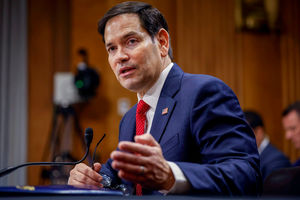Why EU-Kenya trade agreement could complicate East Africa economic integration

Kenyan Trade Minister Moses Kuria (left) and EU Trade Commissioner Valdis Dombrovskis (right) shake hands after concluding a trade deal on 19 June 2023. PHOTO | COURTESY
What you need to know:
- The agreement will come into force once Kenya and EU member states ratify it.
By Harrison Mwilima
On June 19, 2023, the EU and Kenya signed a bilateral free-trade deal, known as the Economic Partnership Agreement (EPA).
The agreement allows Kenyan exports to freely enter the 27-member bloc without being charged tariffs.
On the other hand, Kenya is required to open its market gradually by reducing tariffs to EU products in a period of 25 years.
This happens despite Kenya being a member of the EAC and has agreed to various regional economic agreements, mainly the Customs Union and Common Market.
Through the Customs Union, which was established by the EAC in 2005, member states agreed on a common external tariff (CET), whereby imports from countries outside the EAC zone are subjected to the same tariff when sold to any EAC member state.
The Common Market, on the other hand, was achieved in 2010 and allows for free movement of goods, labour, services and capital within the EAC region.
Despite economic integration progress made by the EAC, there are still some challenges related to non-tariff barriers (NTBs) and the existence of a list of sensitive products that continue to undermine the free movement of goods and services in the region.
In addition to those challenges that hinder the EAC’s full implementation of a Common Market, Kenya’s decision to sign a bilateral free-trade agreement with the EU could facilitate other trade complications at the regional level.
Why Kenya went it alone
It is not a coincidence that Kenya decided to go it alone. Initially, the EPA was intended to be signed at the regional level so as to preserve and respect economic integration policies that have been established in the region.
Negotiations between the EU and EAC on the signing of the EPA at the regional level were concluded in 2014.
However, countries such as Tanzania, Uganda and Burundi did not want to sign due to, among other things, fear that the free trade proposed through EPA would lead to the destruction of local industries in their countries.
As the other EAC member states are classified as least developed countries, they could continue to export duty-free and quota-free to the EU under the Everything But Arms (EBA) arrangement without signing EPA.
For Kenya, which is the only country in the region with a middle-income status, not signing EPA meant that its exports to the EU, including mainly tea, coffee and cut flowers, would face tariffs.
To continue getting free access to the EU market, Kenya had to seek a stand-alone arrangement.
The East African country managed to get temporary special arrangements in order to continue exporting free of duty to EU countries and negotiations to realise a bilateral EPA were concluded on June 19, 2023.
The agreement will come into force once Kenya and EU member states ratify it.
Possible complications to EAC economic integration
Obviously, if other EAC member states will not sign regional EPA, Kenyan future trade engagement with the EU will complicate economic integration procedures going on in the region.
Thinking of the EAC Common Market, for instance, complications could be experienced when Kenya starts to allow EU products to enter its market with reduced tariffs.
That would mean that European goods have entered an EAC single market and could potentially be exported to other countries.
In this sense, new rules and regulations will have to be developed to ensure that European products are not freely crossing borders to other EAC countries.
Other alternatives would involve developing mechanisms to ensure that EU products are charged with tariffs when they come from Kenya and enter other countries in the region.
It remains to be seen how Kenya’s decision to sign the bilateral EPA with the EU will impact the integration process in East Africa.
It will bring in new dimensions and potential economic conflicts that need to be tackled with new regional rules and regulations.
It is important to think about all these potential circumstances earlier enough and not waiting until such complications of bilateral trade between Kenya and the EU turn into regional trade conflicts.
Dr Harrison Kalunga Mwilima is an independent lecturer, consultant and journalist focusing on a sustainable relationship between Europe and Africa. He is a Tanzanian based in Berlin, Germany and is also the author of the book The European Union and Regional Integration in East Africa


